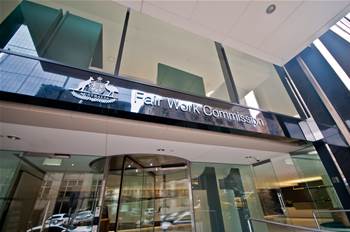The Fair Work Commission is nearing the finish line on an API that will allow businesses to call up wage and entitlements data for awards, potentially helping prevent underpayments to employees.
The commission began the project after receiving funding in last year’s federal budget to connect business software providers and other umpires directly to its modern awards pay (MAP) database.
The MAP database was created in 2019 to support the annual wage review – one of the FWC’s core functions that sees an expert panel set the minimum wage rate in Australia each year.
Trudy Jones, assistant director for the FWC’s modern awards, economics and research section, said the API – which is still undergoing final tests – had been designed to “encourage innovation”.
“People [will] have access to that source of truth through the API and integrate and automate their systems,” she told the Melbourne School of Government's digital government festival.
With the “huge reliance on modern awards across Australia in terms of people’s entitlements”, the API also promises to reduce underpayments for employees.
She cited Australian Bureau of Statistics data that shows around 2.6 million employees getting their rates from an award in Australia, with many others “indirectly affected by those awards”.
“We really saw there was an opportunity to use a digital solution to make that easier because the consequences of not getting the rate correct, of non-compliance, is so significant,” Jones said.
“There are significant penalties that employees face and also, the employees would face an underpayment if that rate was not paid correctly.”
From MAP to API
Jones said the API leveraged the MAP database – a “centralised repository for storing all the pay rates, allowances, penalties and overtime”.
“We needed to centralise the way in which we store those calculations because we need to recalculate them each year in the annual wage review,” she said.
Prior to the arrival of the MAP database, the FWC used a manual process that involved capturing calculations on spreadsheets and transferring them to legal documents and determinations.
Jones described this as a complex process with Australia’s 155 awards – 121 of which are industry and occupational awards – in its workplace relations system.
Businesses too are currently required to transcribe business rules into software from documents to generate rates of pay.
Matt Lewis, managing director at Canberra-based consultancy Capability Wise, who also worked on the project, described this process as “tedious” and “fraught with opportunities for human error”.
In developing the API, the FWC conducted a series of workshops with more than 60 organisations and individuals, including peak bodies, unions and software provider, over a 12-week period.
The co-design process was followed by a 12-month build phase using a “large public cloud API gateway platform”.
As part of alpha, the team “put some foundation” in place, and “prototyped some high risk, complex requirements, and refined both the solution architecture and our data validation techniques”.
“The data coming from this API needs to be trusted and we need to make sure that what’s going into it is 100 percent,” Lewis added.
Moving to the beta phase, the team built out the functionality in two-week sprints and conducted testing on “everything that was coming through every cycle”, first internally and then with users.
“That [user acceptance testing] started around sprint two, and we invited those parties inside the fold to see what we were producing,” he said.
Nearing go-live
Lewis said the project is currently “nearing completion”, with go-live expected to be timed after the annual wage review, which will require a change management process at many organisations.
The go-live was also complicated by phase two of the single touch payroll, which some organisations in the account and financial management space are still “finishing off”.
“Realising this new capability so close to the annual wage review creates risks... so those inputs influence our decision around go live timeframes,” he said.
Some of the immediate use cases for the API could include employers determining the classification of an employee when the join the business, during a “payroll run” and employee termination.
But in the future, the API could also be used to help businesses undertake “roster planning or model the cost of a new employee”.
“Those are the kinds of innovative things that potentially can spin off this,” Lewis added.




.png&h=140&w=231&c=1&s=0)





















